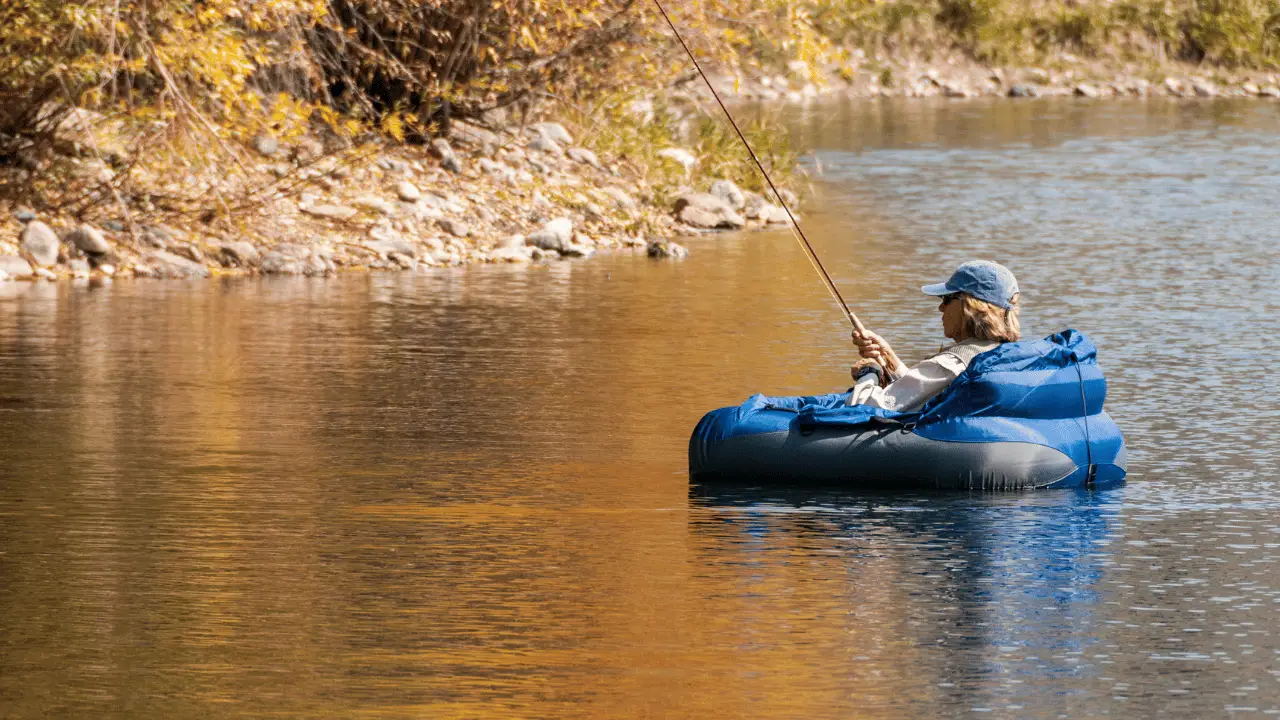Fish finders are helpful tools many fishermen use to simplify their fishing trips. Knowing where the fish are, the chances of getting bites are almost guaranteed. However, these devices can prove complicated, and many don’t know how to install the fish finders on their float tubes.
To install a fish finder on a float tube, you must first choose the right fish finder and know where you want to place it. You can install the transducer mount and find an appropriate power source. Next, you need to secure the display and wire the fish finder. Lastly, you must waterproof and test.
In modern times, many anglers have moved on from their usual flippers and kayaks. With more technology proving helpful during fishing trips, many people have started using fish finders and other equipment to help them improve their fishing game.

How To Mount A Fish Finder On Your Float Tube
When you mount a fish finder on a float tube, the task is trickier than with a regular and more oversized boat. You have a smaller space to work with and might get frustrated when a big device is in your way of getting a bite.
Step 1: Choose The Right Fish Finder
Since the space on your float tube is minimal, ensure the fish finder you pick can be used on a small boat or in a movable setting. Look for models with small screens and sensors that can attach to a float tube. If you are on a tight budget, you should keep that in mind when you go shopping.
Step 2: Choose Where You Want To Mount The Fish Finder
Pick out a spot on your float tube to put the fish finder. Some common spots are on the side of the float tube, in front of you, or on an arm that sticks out from the float tube. Ensure your chosen spot lets you see well and quickly gets to the fish finder settings. You should also ensure the fish finder won’t be in the way when you must reel in a bite.
Step 3: Install A Transducer Mount
Most fish finders come with a transducer that needs to be submerged in the water for accurate readings. You’ll need a mount to secure the transducer to your float tube. You can use a transducer arm, which can attach to your float tube and it will extend the device further into the water.
You can also use a transducer float for your float tube. A small float will attach to your transducer with a leash and then be allowed to float on the water surface next to your float tube. Both options are plentiful and will let you handle the device without a problem.
Step 4: Power Source
Figure out how you’re going to power the fish finder. Rechargeable batteries are often used in portable fish finders. You should have a safe, waterproof way to keep the battery on the float tube. It will also be great to keep extra batteries on hand if you plan on fishing for an extended time.
Step 5: Secure The Display Of The Fish Finder
Depending on the type of fish finder you have, you may need to secure the display to the float tube. Some anglers use adjustable mounts or DIY solutions to keep the fish finder display in place. You just have to ensure the device is secure in its place and won’t fall into the water and get lost.
Step 6: Wiring The Fish Finder
Hold the wires neatly along the float tube so they don’t get tangled up or get in the way of your fishing gear. You could use cable ties or clips to keep the lines in order. When your fish finder wires get in the way, you might fall from the tube or lose your fish finder when you accidentally pull it.
Step 7: Waterproofing The Fish Finder
Given the nature of water activities, it’s crucial to waterproof your connections. Use waterproof sealant or electrical tape to protect the connections and prevent water from entering the electronic components.
Step 8: Test And Adjust The Set-Up
Before heading out on the water, test the fish finder to ensure it’s working correctly. Make any necessary adjustments to the transducer placement or display angle. Always refer to the specific instructions provided by the manufacturer of your fish finder for the most accurate and safe installation on a float tube.
Benefits Of Using A Fish Finder
There are many different brands of fish finders on the market, and while they are mostly the same, some might have more features and are better quality than others. Fish finders are great devices to have when fishing, and they provide many benefits. Here are some of the benefits of using a fish finder:
- Increased catch rates – Fish finders significantly improve your chances of catching fish by providing real-time information about the underwater environment, including the location of fish, schools, and structures
- Time efficient – Fish finders help you save time by guiding you to productive fishing spots. Instead of relying on trial and error, you can target specific areas where fish are likely to be concentrated
- Depth and temperature readings – Fish finders provide depth readings, helping you identify the depth at which fish hold. Some models also display water temperature, which is crucial for understanding fish behavior
- Bottom structure identification – Fish finders can show you details about the underwater terrain, such as drop-offs, ledges, submerged vegetation, and rocky structures. This information is valuable for identifying prime fishing locations and to prevent any mishaps with your line
- User-friendly – Modern fish finders are user-friendly, with intuitive interfaces that make them accessible to anglers of all skill levels
- Advanced features – Many fish finders come with advanced features like GPS mapping, side imaging, and down imaging, providing a more comprehensive view of the underwater landscape
- Versatile – You can use the fish finder in many fishing environments, including lakes, rivers, and oceans. They are effective for fresh and saltwater fishing as well
Conclusion
To install a fish finder on a float tube, choose the suitable model with small screens and sensors, then select a convenient spot. Next, you must install a transducer mount, determine the power source, and secure the display. You must wire the fish finder neatly, waterproof the connections, and test and adjust the set-up before using it.
- What Size Baitcaster For Fishing Swimbaits? - February 8, 2024
- How Do You Mount A Fish Finder On A Float Tube? - February 8, 2024
- What Can I Use Instead Of Split Shot For Freshwater Fishing? - February 7, 2024









